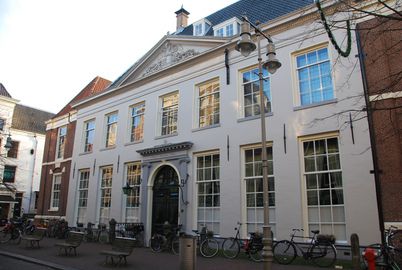

The West India House housed the original headquarters of the Dutch West India Company, one of the first multinational corporation in the world. It was precisely in this house that the decision to buy the island of Manhattan for 60 guilders (the equivalent of about 400 euros today) was made and the order for construction of a fort, to be christened Niuew Amsterdam, was issued in 1625. West India Company traded the island with the British in 1664 in exchange for territories in South America, which is reputed to be one of the company's major financial blunders. The West India House was built in 1606 by the city's main architect Hendrik de Keyser. It sits on the Herenmarkt, a tiny square squeezed between the bustling Haarlemmerstraat and the leafy Brouwersgracht. Originally this building housed an armory, then a meat market on the ground floor and a waiting room for the local militia (equivalent to today's police office) on the upper level. From 1623 to 1647 Dutch West India Company rented the building to hold its business meetings. During this time the building was expanded with two wings around a central courtyard, thus tripling its size. Although not as sovereign as the Dutch East India Company, the Dutch West India Company was essentially granted free rein to trade along Africa's west coast, in the Americas, and on all the islands of the West Pacific and New Guinea. In the 1600s it effectively managed the infamous export of 275,000 slaves from West Africa to the Caribbean. In these rooms, the decision was made to buy Manhattan for 60 guilders (equivalent of about €800 today). In 1647, as a result of financial troubles, the company had to move. From 1660 onward the building was used as a gentlemen's hotel and in 1825 it became a home for orphans and the elderly. The building was renovated, the high front entrance removed and the facade plastered. In 1975 a fire severely damaged the building, however it was restored between 1978 and 1981, at a cost of 12 million guilders (approximately € 5 million). In the courtyard a fountain with a bronze statue of a one-legged Peter Stuyvesant, the first governor of the New Netherlands in Manhattan, was erected. After renovation, the building acted as an old folks home and was also frequently used as municipal wedding hall. The West-Indisch Huis was eventually declared a monument, and these days it functions as a conference and event venue. It is also home to the John Adams Institute, which fosters cultural exchange between The Netherlands and the United States. It is a well-known fact that the founding fathers of the United States looked up to the Dutch Republic for inspiration when they drafted the U. S. Declaration of Independence and the Bill of Rights.